11 October 2019, 21:04
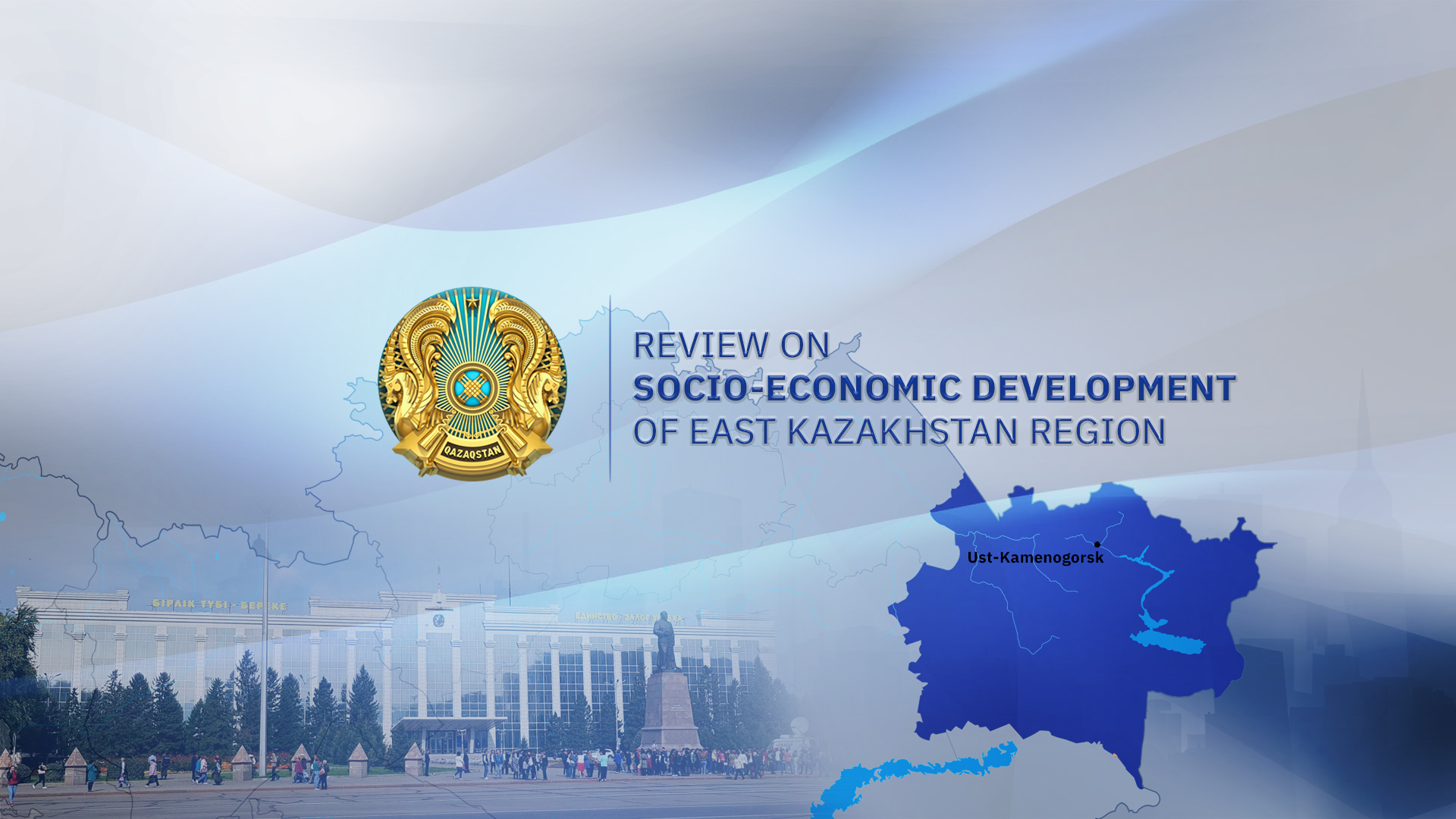
On behalf of the Head of State, a number of state programs are actively implemented in the regions of Kazakhstan aimed at improving their socio-economic development, economic progress in the context of the country. Read the report by PrimeMinister.kz on the work carried out in this direction in the East Kazakhstan region.
For eight months of 2019, the volume of production in the mining industry increased by 73% compared to the corresponding period of 2018 and amounted to 309.4 billion tenge
In January-August 2019, the volume of industrial production in the region amounted to 1,353.4 billion tenge, an increase of 10.7% compared to the same period last year.

East Kazakhstan has a powerful mineral resource base. The richest ore formations contain all the elements of the periodic table. The main wealth is multicomponent polymetallic ores. In addition to them, there are deposits of tin, tantalum, titanium, magnesium, nickel and cobalt in the bowels. Large mining enterprises of the region: KAZ Minerals Aktogay LLP, Bakyrchik Mining Enterprise LLP, Vostoktsvetmet LLP, Taskara LLP, Satpayev Mining and Processing Enterprise LLP, Miners Artel Miners LLP.

For eight months of 2019, the volume of production in the mining industry amounted to 309.4 billion tenge with an increase of 73% compared to the corresponding period of 2018. The mining industry accounts for 23% of the region's industrial production. In 2019, 29.4 million tons of copper ore (37% of the republican production volume), 3 million tons of lead-zinc ore (71% of the republican volume), 2.2 million tons of gold-containing ore (2.6 times) were mined in the region more than last year), 1.9 million tons of copper-zinc ore (61% of the republican production volume).
More than 70% of the region's industrial production is in manufacturing. In the manufacturing industry over the 8 months of this year, the volume grew by 6.4% compared to the same period last year, production amounted to 974.4 billion tenge. In the structure of manufacturing industry, 48% is metallurgy. The growth is due to an increase in production in the metallurgical industry due to the growth of gold-bearing concentrates by 2.7 times, copper concentrates by 5.6%.

Enterprises of the metallurgical industry: Kazzinc LLP, Ust-Kamenogorsk Titanium-Magnesium Plant JSC, Ulba Metallurgical Plant JSC are export-oriented and produce basic noble and non-ferrous metals, as well as titanium, magnesium, tantalum, fuel for nuclear power plants.
The second most important industry is engineering. 20% of all engineering products and 40% of Kazakhstan's vehicles are produced in the east of the country. The machine-building complex produces mining equipment, equipment for concentration plants and metallurgical plants, oil and gas production, industrial capacitors, tractor units, cable and wire products and a number of other products. Leading enterprises of the industry: Asia Auto JSC, SemAz LLP, Ust-Kamenogorsk Valve Plant JSC, KEMONT JSC, Ust-Kamenogorsk Condenser Plant LLP and others.

According to the results of eight months, engineering enterprises produced products worth 130.3 billion tenge, an increase of 37% compared to the same period last year. Volume index of 133.5%. The volume of production in mechanical engineering increased due to an increase in the production of cars by 15%, the production of tractors increased by 2.1 times, trucks by 8.9%, 476 Gazelle buses and 128 Dong Feng buses were produced.
Ust-Kamenogorsk Condenser Plant LLP is working on the development of 11 new types of products. KazElectroMash LLP is completing a project to launch the production of high-voltage cable from cross-linked polyethylene. This type of cable is innovative in the field of power supply. The planned launch of the line and mass production is planned in 2019. Semey Engineering JSC is implementing a project to create a center for engineering and technical maintenance, repair and modernization of heavy military and civilian equipment.

The volume of production of building materials in January-August 2019 amounted to 36.3 billion tenge and increased by 2 billion tenge compared to the same period in 2018. Large enterprises of the industry: Semey Cement Plant LLP, Bukhtarma Cement Company LLP, Kazakhcement LLP, Silikat LLP, YuKO Stroy LLP, Promstroy LLP, Precast Concrete Production Association LLP, ZhBK LLP , Semey Kurylys materialdary LLP, PTC IZOTERM LLP.
In the chemical industry, the production volume for 8 months of 2019 amounted to 19 billion tenge and increased by 3.6 billion tenge compared to the corresponding period of 2018. Chemical industry products are produced by the enterprises of UMZ JSC, Orika Kazakhstan JSC, Azot PRK, KAZFOAM LLP, Semipalatinsk Cable Plant LLP, Magelan LLP.
In January-August 2019, the enterprises of the woodworking industry produced products worth 3.3 billion tenge. Major industry enterprises: Favorit LLP (Zubovka village), Melissa LLP (Ust-Kamenogorsk), Zhana Semey Shpal Zauyty JSC (Semey), Investroy LLP (Ridder), LLP Kenes and K (village Cheremshanka).
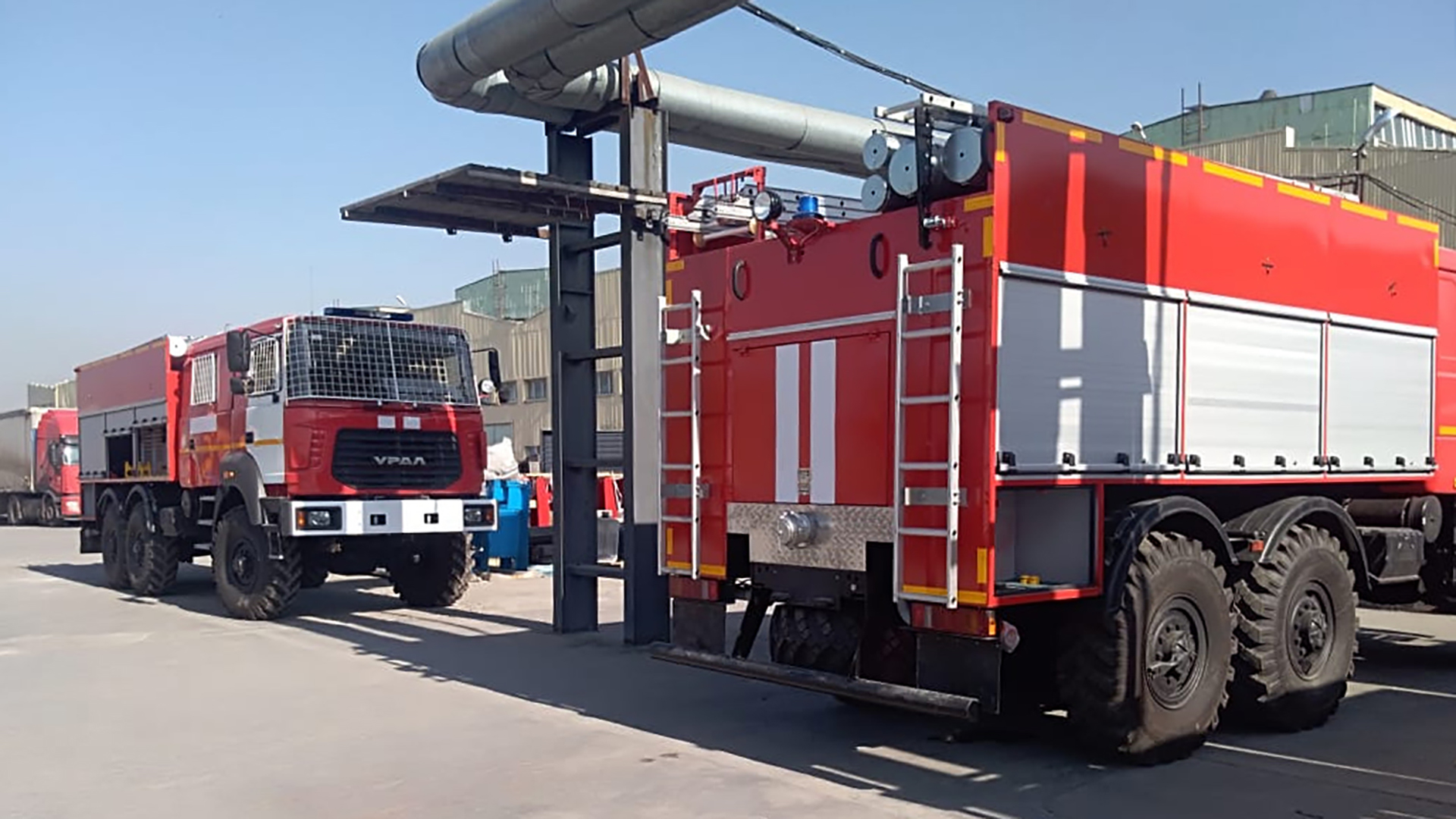
In eight months of 2019, the volume of production of light industry in the region amounted to 3 billion tenge. A total of 85 light industry enterprises in the region, of which 82 are small. 23 enterprises are engaged in the production of textiles, 52 enterprises are engaged in the production of clothes, and 10 enterprises are engaged in the production of leather products. The bulk of the production capacity of the region’s light industry is concentrated in Semey (62% of the region’s light industry production). At the enterprises of light industry, work was carried out to introduce new industries and develop new types of products. Semspetssnab LLP commissioned a new garment factory, launched a line for the production of civilian shirts with an annual capacity of 20 thousand pieces per year. The design and technological program “Grace” was established to ensure consistent layout in the cutting shop, and the knit shop (garments from knitted fabric) was launched. Rosa Felting and Felt Combine LLP acquired molds for molding soles under pressure, eight shoe models and a new technology for the production of felt boots were mastered. UK Unis LLP acquired new knitting machines, mastered the production of school and sportswear.
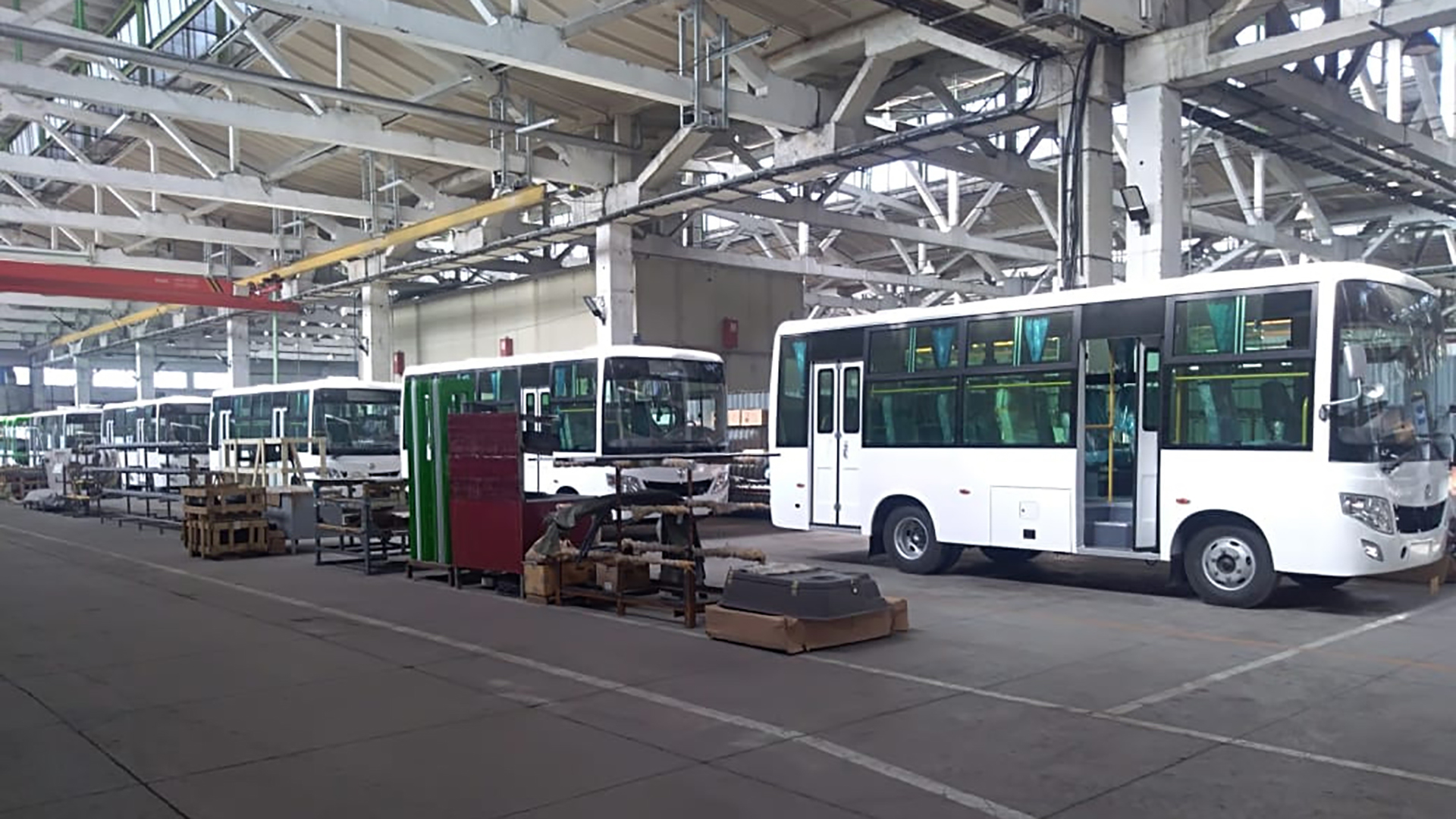
One of the most popular and successful enterprises in Kazakhstan is Daewoo Bus Kazakhstan, which is engaged in the production of Daewoo passenger buses, which have established themselves as reliable, comfortable vehicles adapted to work in sharply continental climates with severe winters. This year, the LLP produced 406 buses for 8 billion tenge against 72 last year. There is a six times increase.
The dynamic development of production is facilitated by measures of state support for domestic producers. The company participates in a leasing financing program to upgrade the bus fleet of Kazakhstan. The operator of the program is JSC DBK-Leasing. This year, 353 buses worth 6.8 billion tenge were sold.
SemAZ LLP is the flagship of the production of agricultural and other equipment. For 8 months of this year, the production of tractors amounted to 350 units and increased by 2.3 times. The production potential of the enterprise is able to meet the needs of the Republic of Kazakhstan with Belarus tractors of various modifications. Today, a promising direction in this segment of mechanical engineering is the production of tillage and grain-sowing equipment, which will ensure further growth in production volumes, domestic consumption, and reduce import dependence. Production capacity in kind: Tractor Belarus - 3000 units. per year, Shacman dump trucks – 500 per year, Ural off-road trucks – 200 per year, Foton cars of various modifications – 500 per year.
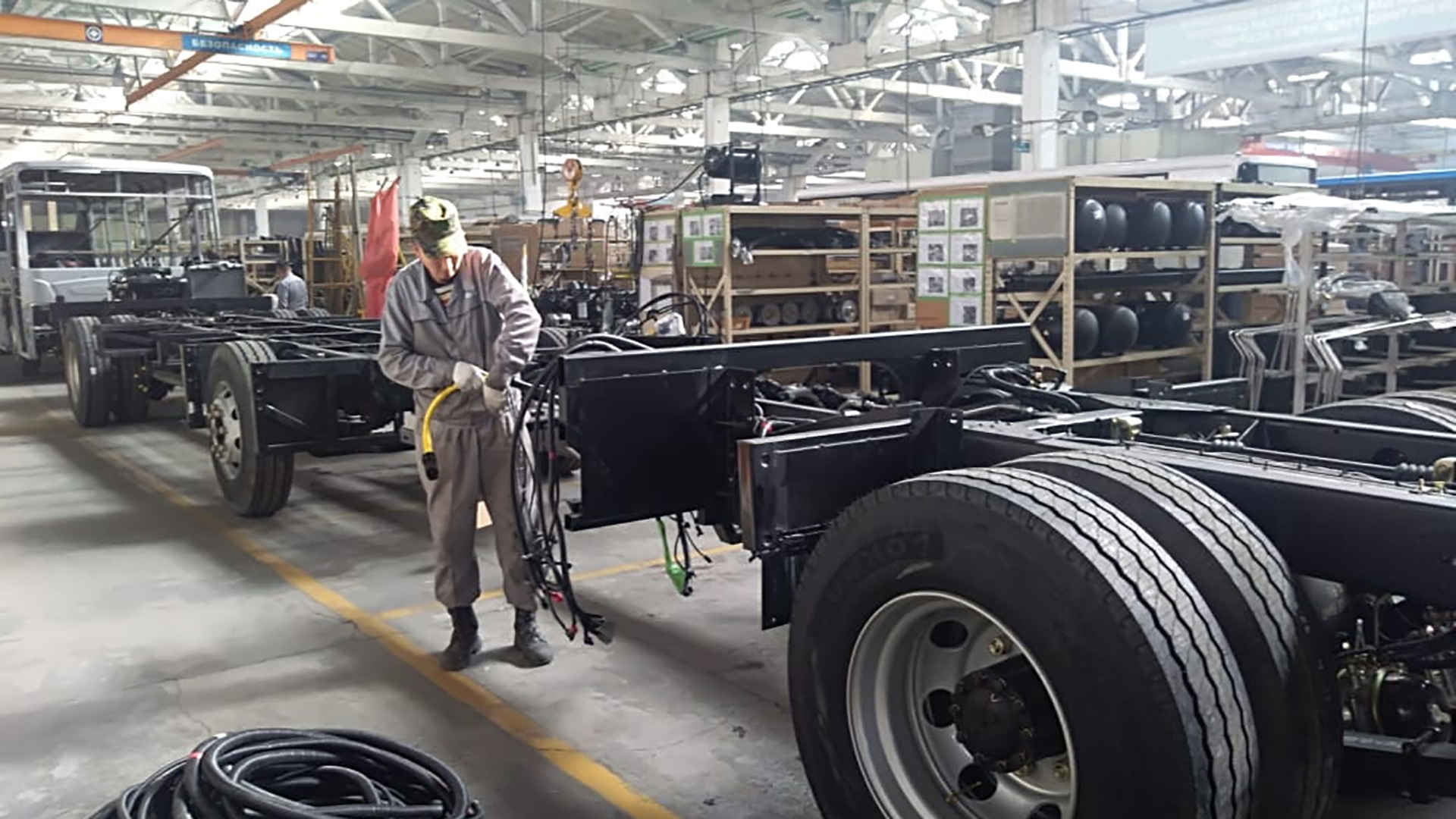
The main suppliers of products are Minsk Tractor Plant, Ural Automobile Plant OJSC (RF), Shaanxi, Xinjiang Yuanxinyuan Trading and Foton (China) factories, GAZ Commercial Vehicles Group (RF), AvtoExport LLC (RF), Bobruisk Tractor Plant OJSC parts and assemblies. Today, SemAZ LLP produces 9 models of Belarus tractors under the license of Minsk Tractor Plant OJSC, all modifications of URAL, Foton, SHACMAN, Gazelle, Dong Feng buses.
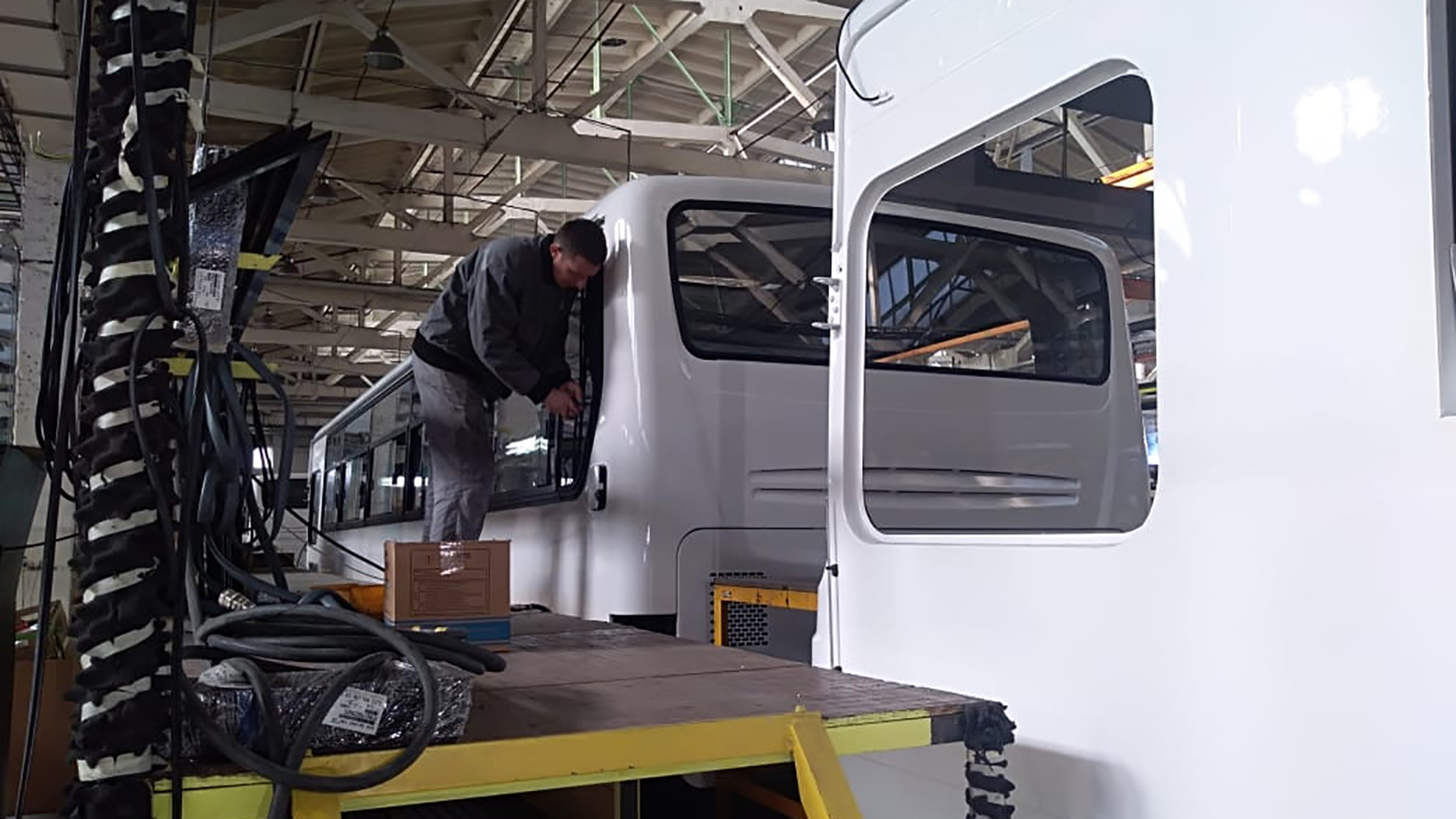
In January-August 2019, SemAz LLP produced industrial products at current prices in the amount of 10,955 million tenge, which is 2.6 times higher than the level of 2018 (January-August 2018 – 4,153.9 million tenge). 363 units of Belarus tractors were produced (170 in January-August 2018), 646 trucks (186 in January-August 2018), including 98 SHACMAN trucks (January-August 2018 – 74), 476 Gazelle cars, 72 Ural trucks (January-August 2018 – 82), Foton cars (January – August 2018 – 30) and 128 Dong Feng buses.
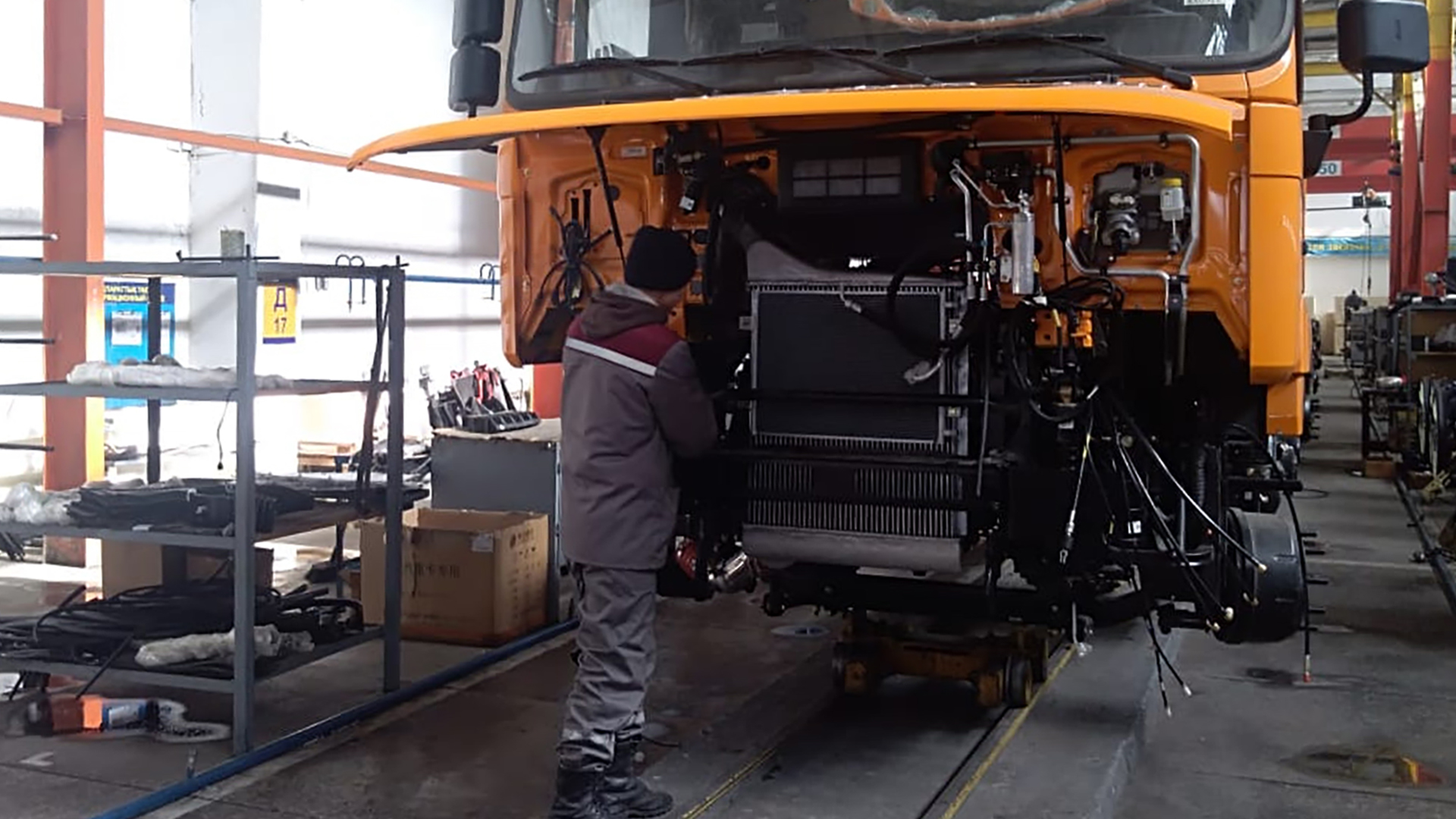
Gross agricultural output in January-August 2019 increased by 13% compared to the same period last year
The agro-industrial complex of the region is developing in accordance with the State Program for the Development of the Agro-Industrial Complex of the Republic of Kazakhstan for 2017-2021.
The volume of gross agricultural output in January-August 2019 amounted to 245.4 billion tenge, which is 13% more than the same period last year. Gross crop production amounted to 44.2 billion tenge, livestock 201 billion tenge. The gross agricultural output in January-August 2019 increased by 4.3%.

Investments in fixed assets of agriculture for 8 months of this year amounted to 17.4 billion tenge, growth compared to the same period in 2018 amounted to 30.5%.
The volume of commercial products of the food and processing industry in January-August of this year amounted to 87.3 billion tenge, which is 12.3% higher than the level of the same period in 2018. The volume of exports of processed agricultural products for seven months of 2019 amounted to $ 39.4 million, which is lower than the level of the same period in 2018.

In January-August 2019, 158.1 thousand tons of meat of all types of livestock and poultry in live weight were produced, compared with the same period in 2018, an increase of 2.7%, milk – 667.1 thousand tons (an increase of 4.2 %), eggs 105.6 million pieces (an increase of 2.5%).
The number of cattle increased by 7.3% and amounted to 1,166.2 thousand heads, including cows by 8.1% (548 thousand heads), horses – by 11.4% (420.7 thousand goals).
As of Sep. 1, 2019, 226 tons of meat were exported. Agricultural producers of the region signed contracts for the supply of 1,600 tons of meat by the end of the year to the Republic of Uzbekistan and China.

In 2019, 3 dairy farms for 700 animals will be built, reconstruction of 5 farms for 1,100 animals is planned. In 2019, it is planned to create 10 milk collection points. As of Sep. 1, 2019, 60,088 tons were produced by dairy farms, with a plan of 60,195 tons, 99.8% performance.
The region continues harvesting in 2019. As of Sep. 14, 2019, grain crops were harvested on an area of 428.1 thousand ha or 77.9%. With a yield of 16.8 c / ha, 717.5 thousand tons were threshed.

We started harvesting oilseeds, which are harvested on an area of 4.1 thousand hectares, or 1%. The average yield is 9.5 c / ha. Potatoes were harvested on an area of 7 thousand ha 36.5%, vegetables on an area of 5.3 thousand ha (65.5%) and melons 3.6 thousand ha (63.3%).
Farms and elevators of the region have 90 dryers of various capacities, 3,248 combine harvesters. To carry out harvesting, farms in the region need 25 thousand tons of diesel fuel.
Only 195.7 thousand ha of irrigated land are registered in the region. Assigned to business entities 152.8 thousand hectares, is in the state land reserve of 43 thousand hectares. In 2019, 94.7 thousand hectares of land were used (62%).

In order to develop irrigated agriculture in the region, together with the Asian Development Bank, a state investment project is being implemented to restore demanded irrigated land with a total suspended area of 82.2 thousand ha. This work is being carried out in Kurchum, Tarbagatai, Urdzhar, Zharma, Zaysan, Kokpektinsky districts, the implementation of these projects will expand the area of irrigated land used by 2022 to 173 thousand hectares.

At the same time, construction of six new reservoirs with a total irrigated area of 44.5 thousand hectares is planned in the region until 2030. The implementation of the above projects will allow by 2030 to put into circulation 379 thousand hectares of farmland.
In January-August 2019, the volume of investment in fixed assets amounted to 387.2 billion tenge, an increase compared to the same period last year, 45.9%
The volume of investments in fixed assets of the East Kazakhstan region in 2018 amounted to 494.6 billion tenge. In January-August 2019, the volume of investment in fixed assets amounted to 387.2 billion tenge. 175.8 billion tenge or 45.4% was invested in foreign investments. One of the instruments to attract investment is the Entrepreneurship Support Map, which implements 73 investment projects totaling 1.3 trillion tenge with the creation of 15.1 thousand jobs. The most significant of these are the construction of the Aktogay GOK with the creation of 1,500 jobs, the expansion of the processing capacities of the Aktogay GOK through duplication of the existing sulfide factory with the creation of 700 jobs. For the period from 2010 to 2018, 47 projects were commissioned for a total of 707.8 billion tenge, with the creation of 8.5 thousand jobs.
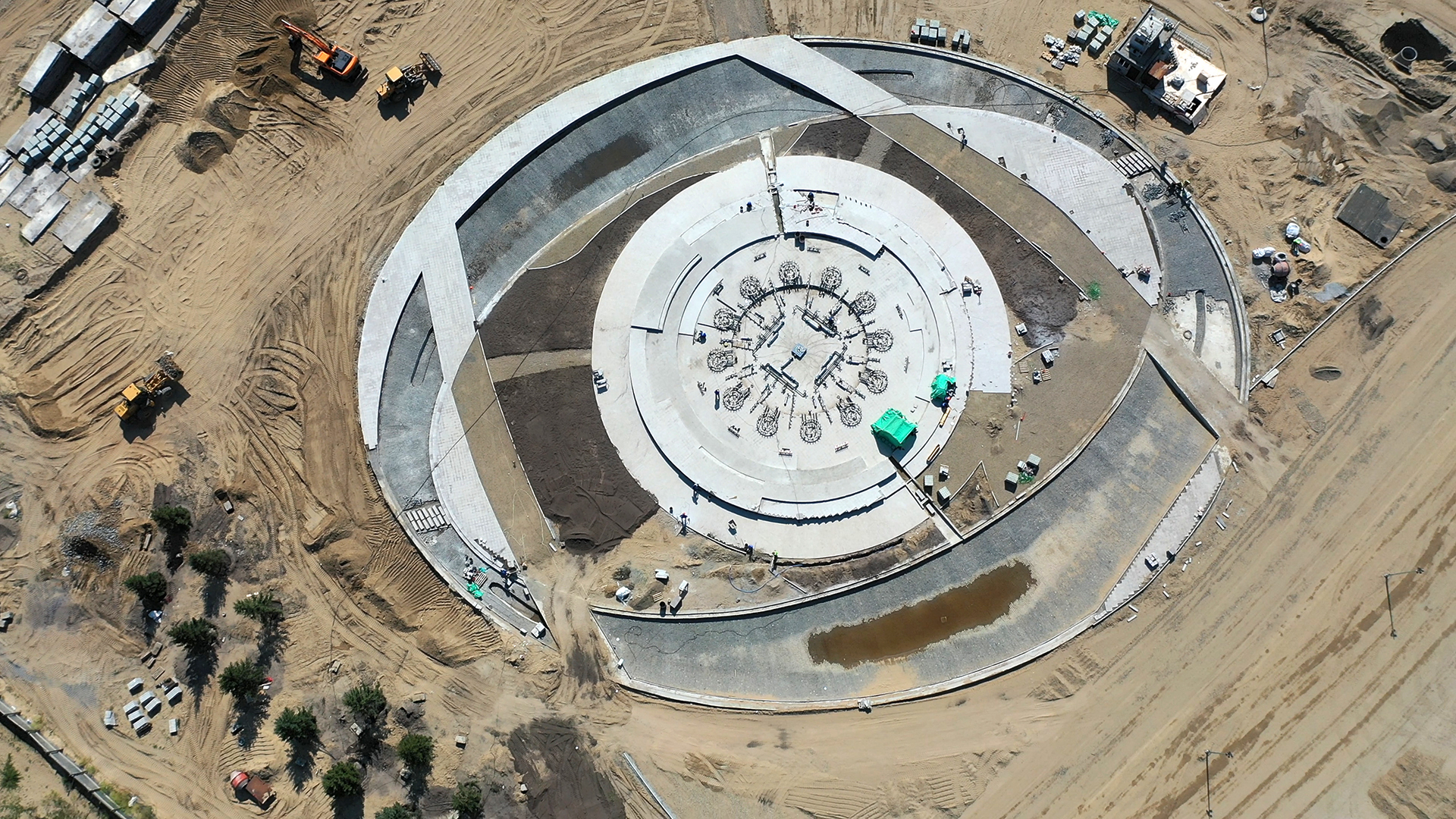
The largest project launched in 2018 is the construction of a mining and processing complex with a capacity of 2 million tons of ore per year – Bakyrchik Mining Enterprise LLP with the creation of 1,100 jobs.
In 2019, four projects are planned for 26.4 billion tenge. Of these, two projects were commissioned – the organization of a workshop for the production of reinforced concrete products by dry pressing and the construction of a solar power station. With the participation of Australia, Russia, China, the United Arab Emirates, Iran in 2019-2020. Five projects for 80.5 billion tenge will be implemented as part of the state program of industrial and innovative development - Eurasia Agro Holding LLP, Asia Auto Kazakhstan JSC, LONG XIN LLP (LUN SIN) LLP, GRK MLD LLP, LLP AGRO PORTAL.
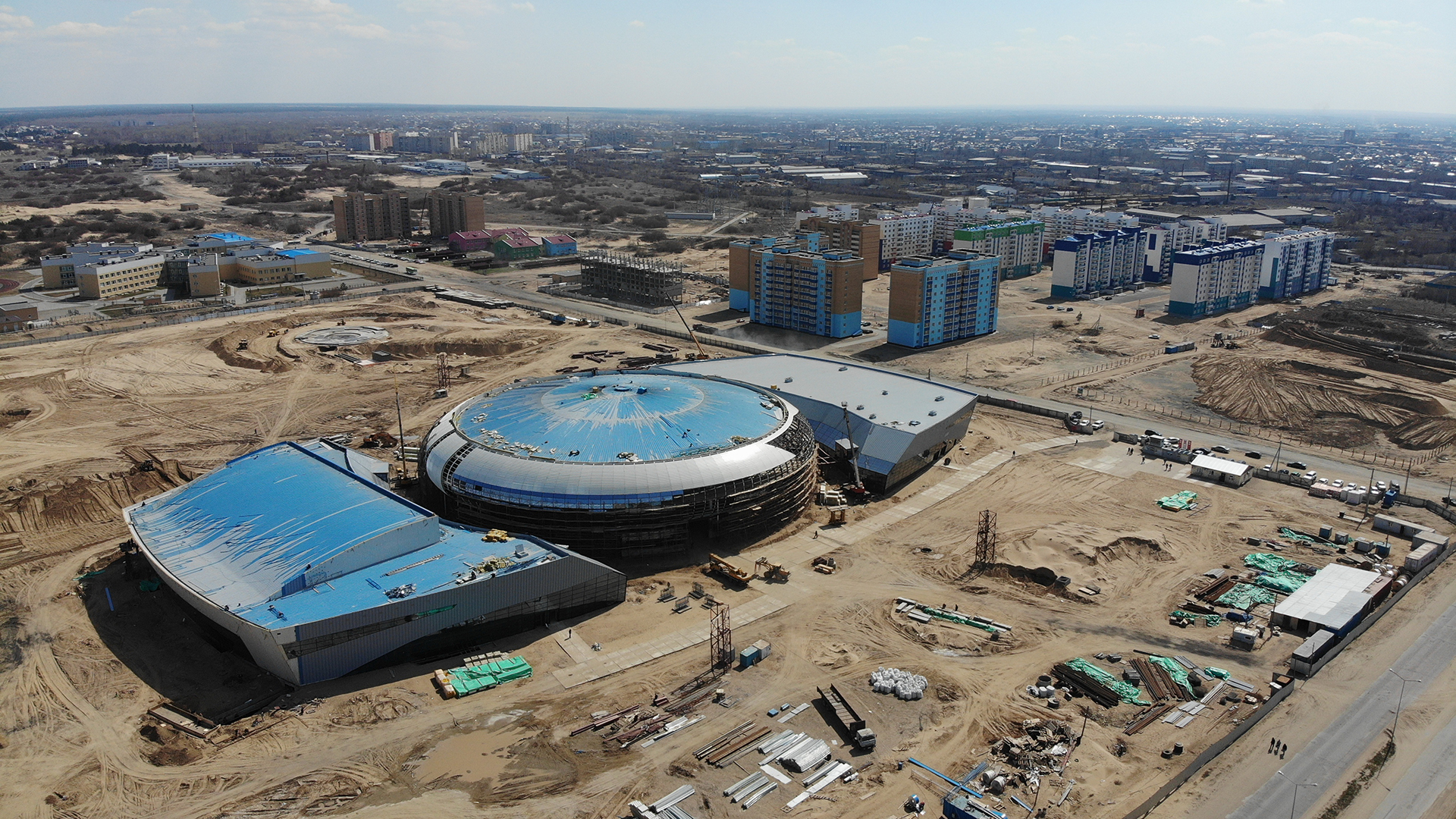
In order to create conditions for further attracting investments, the Investor Services Sector and the Entrepreneurs Service Center operate on the principle of one window in the region, an Investment Portal has been opened. In the region, a Center for attracting investors and promoting investment projects has been opened, which has created the conditions for "targeted" support of each investment project and investor. When the investor appeals, the work of the responsible state bodies and organizations is organized in order to provide services.
For eight months of 2019, number of SMEs increased by 7.3%, more than 8.5 thousand new jobs were created
As of Sep. 1, 2019, there is an increase in the number of operating small and medium-sized businesses by the same period in 2018 by 6367 units, or 7.3%, from 87,011 in 2018 to 93,378 in 2019. For January-March 2019, the volume of output by SMEs increased by 45.4 billion tenge, or 25.7% compared to 2018, and amounted to 221.9 billion tenge. The number of employees in SMEs for the 1st quarter of 2019 amounted to 229.7 thousand people, the growth rate by 2018 – 105.1% (in 2018 – 218.6 thousand people). The proportion of people employed in SMEs to the population employed in the economy amounted to 33.9% (in 2018 – 32.2%). For 8 months of 2019, 8580 new jobs were created in the field of small business.

The volume of tax revenues and payments from SMEs for 8 months of 2019 amounted to 47 billion tenge, which is 8 billion tenge or 20.4% more than in 2018. In order to financially support entrepreneurship, within the framework of the State Business Support and Development Program “Business Roadmap 2020”, subsidy agreements were signed for 96 projects this year for loans of 6.6 billion tenge, subsidies for 992.8 million tenge were paid, 72 projects were guaranteed for the total amount of loans 2.2 billion tenge, for which the amount of guarantees amounted to 784.1 million tenge, 72 grants worth 173.7 million tenge were issued.
As part of the non-financial support for the components “Business Advisor” and “Business - Growth”, 1.4 thousand people were trained in the basics of entrepreneurship. In the Support Centers for Entrepreneurs, 12.1 thousand consultations were provided to 5.9 thousand clients. Under the Program for the Development of Productive Employment and Mass Entrepreneurship for 2017-2021, Enbek provided 843 microloans worth 4.1 billion tenge, including 734 for 2.9 billion tenge in rural areas and 109 for 1.2 billion tenge in cities and single-industry towns. As part of the Regional program of preferential financing, 33 projects were credited for 925.3 million tenge.
For Oct. 1, 2019, Enbek program reached 12.7 thousand people
As part of the implementation of the Enbek State Program for the Development of Productive Employment and Mass Entrepreneurship for 2017-2021, 8.9 billion tenge is allocated in 2019.
As of Oct. 1, 2019, 12.7 thousand people became participants in the program with a plan of 14.5 thousand people (87%), the remaining 13% will be covered by the end of the year. In total, measures were taken to employ more than 22.4 thousand people (80.2% of the participants), of which 14.3 thousand people or 64% for permanent jobs.
As part of providing technical and vocational education and short-term vocational training in 2019, 2.5 billion tenge was allocated, of which 1.9 billion tenge was allocated for vocational training, short-term training - 654.5 million tenge.
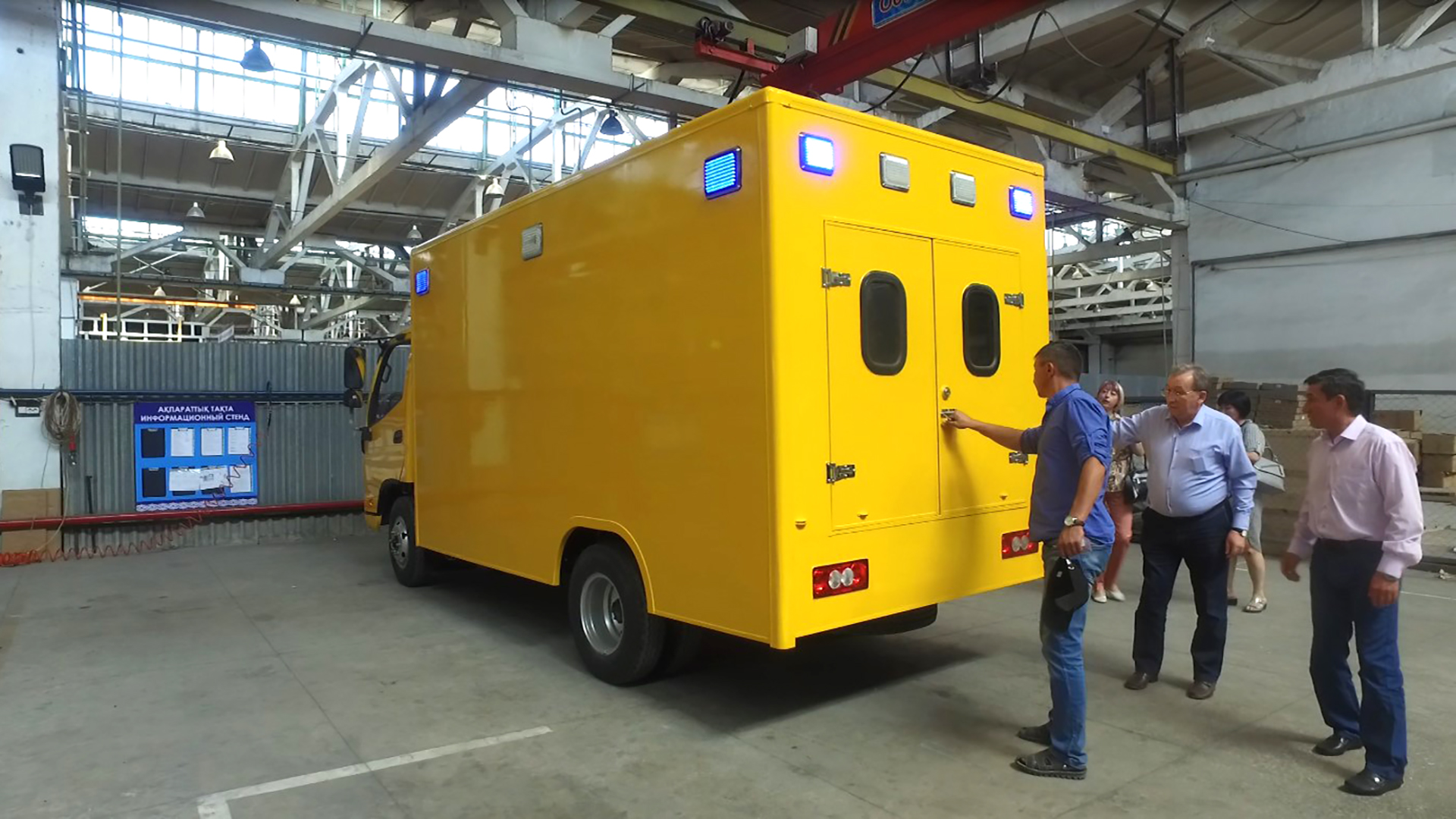
In the current year, from September 1, 1730 young people started vocational training, which is 100% of the annual plan, 2507 students have been continuing their education since past years. 3746 people or 99.4% of the annual plan (3,725) were sent to short-term courses, of which 2,145 people completed, 1,090 people (51%) found permanent jobs after completion.
In the framework of the development of mass entrepreneurship in this year 5.2 billion tenge are provided. This year, 1,166 microloans worth 4.2 billion tenge will be issued from the republican budget, including 956 microloans worth 3.2 billion tenge in villages and small towns, and 210 microloans worth 931.6 million tenge in cities. As of Oct.1, 4.4 billion tenge was issued for 955 projects, of which 3.2 billion tenge for 844 projects in the countryside, which is 100% of the allocated funds, in cities – 20 projects for 0.24 billion tenge from the funds .g. and 91 projects worth 1 billion tenge from 2018 funds.
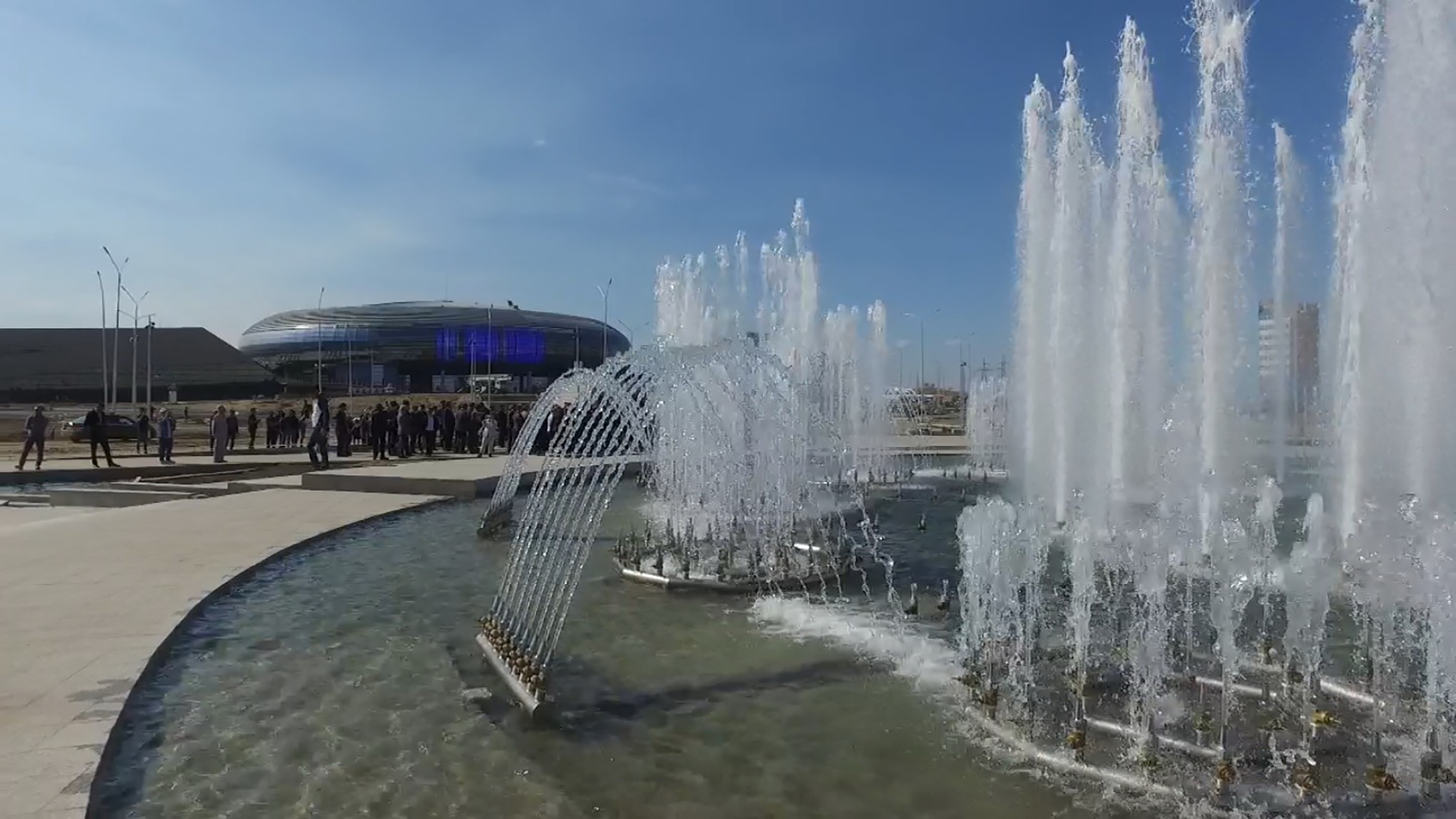
Within the framework of the Bastau Business project, 1,400 students were trained, or 100% of the target indicator (1,400 people), of which 125 were large. 1,204 people (86% of the total number of trained) defended their business plans, 572 projects were funded with a plan of 280. As part of the new project, Zhas Kasipker, 1,149 participants were enrolled in the training, 1,074 students completed the training, or 83% of the target. The Program also provides for the provision of state grants for the implementation of new business ideas in the amount of 100 to 200 MCI. Grant coverage plan — 1,545 people.
Oct.1, 2019, 798 grants worth 347.7 million tenge were issued, of which 139 to 65.9 million tenge were provided to low-income and large families.
1.2 billion tenge were allocated for the development of the labor market through the promotion of employment and labor mobility in 2019.
As of Oct. 1, 778 people or 115% were sent to social jobs. 1,036 young professionals, or 117% of the plan, were directed to youth practice.
Within the framework of the Territorial Development Program, 5798 people or 97% of the annual plan were directed for public works.
As of Oct. 1, 2019, 360 people were relocated from permanent labor markets to permanent jobs. More than 70 graduates of the Serpin project became participants in the resettlement.
For the payment of targeted social assistance this year allocated 11.4 billion tenge. At the beginning of October of this year, ASPA was assigned to 20,102 families.
As part of the reconstruction of the construction and reconstruction of national roads of the East Kazakhstan region, work continues on the basis of a turnkey private loan on 2 corridors Taldykorgan - Kalbatau - Ust-Kamenogorsk km 615-1073 and Kalbatau – Maykapshagai km 906-1321, with a total length of 869 km. After the reconstruction, the road will be transferred from III technical category to II, with a widening of the carriageway to 9 meters and with a design speed of up to 120 km / h. The implementation period of all sites until 2022.
In 2019, it is planned to commission 443.5 thousand m² of housing
In total, in 2019, at the expense of all sources of financing, construction of 682.3 thousand m² of housing is underway, of which 77 multi-apartment residential buildings for 467.7 thousand m², 5,554 apartments (42 in Ust-Kamenogorsk; Semey – 25; in the districts – 10).
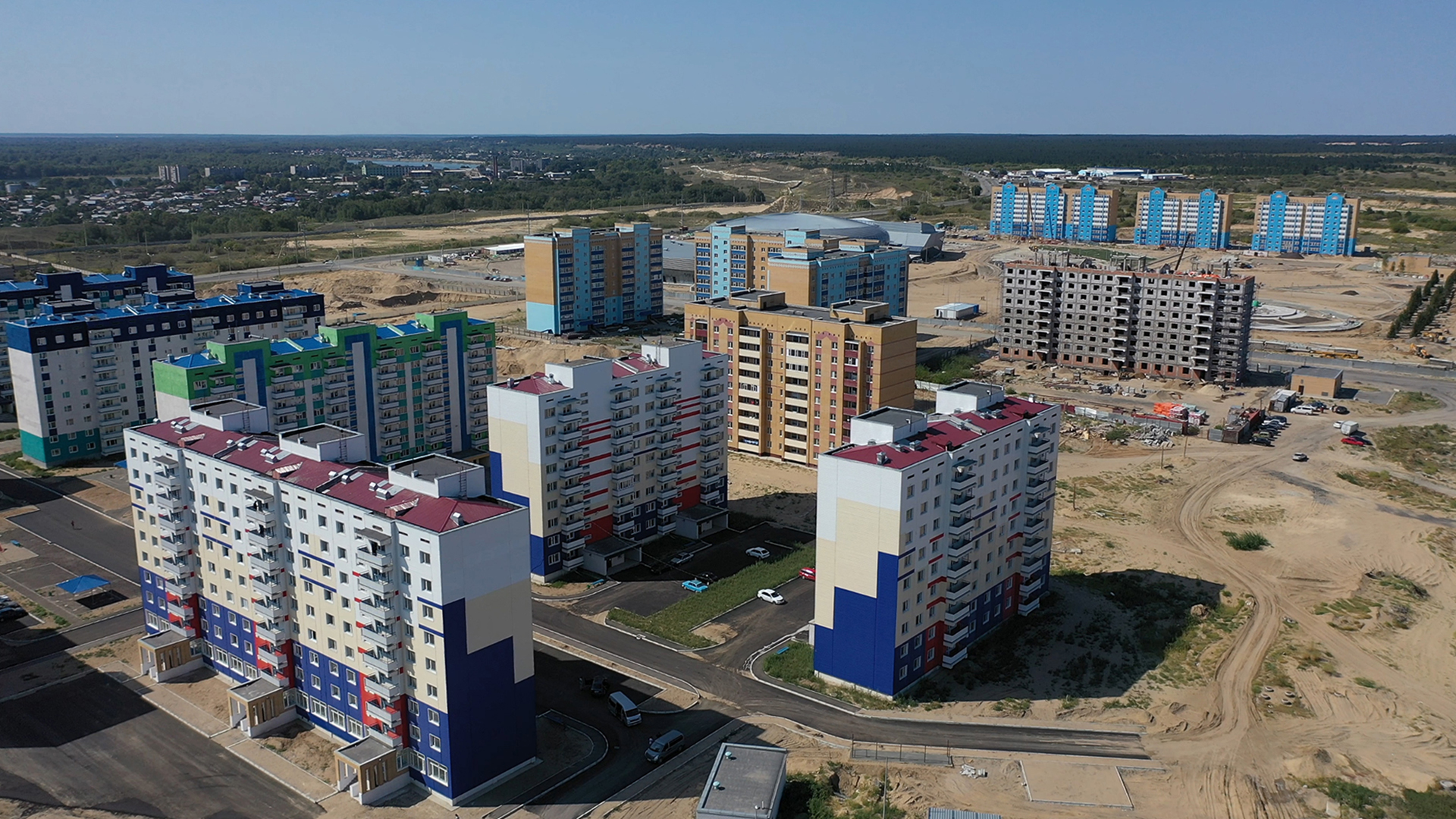
According to the results of the current year in the region, due to all sources of financing, it is planned to commission 443.5 thousand m² of housing, with an increase of 108% by 2018, including 46 multi-apartment buildings by 228.9 thousand m², 10 credit through government securities of multi-apartment 56.3 thousand m² of houses, 8 non-repurchase houses of 28.2 thousand m², 17 apartment buildings through the quasi-public sector of 102.3 thousand m², 9 credit houses through Yertis SEC, 11 commercial houses for private investment account of 48.6 thousand m².
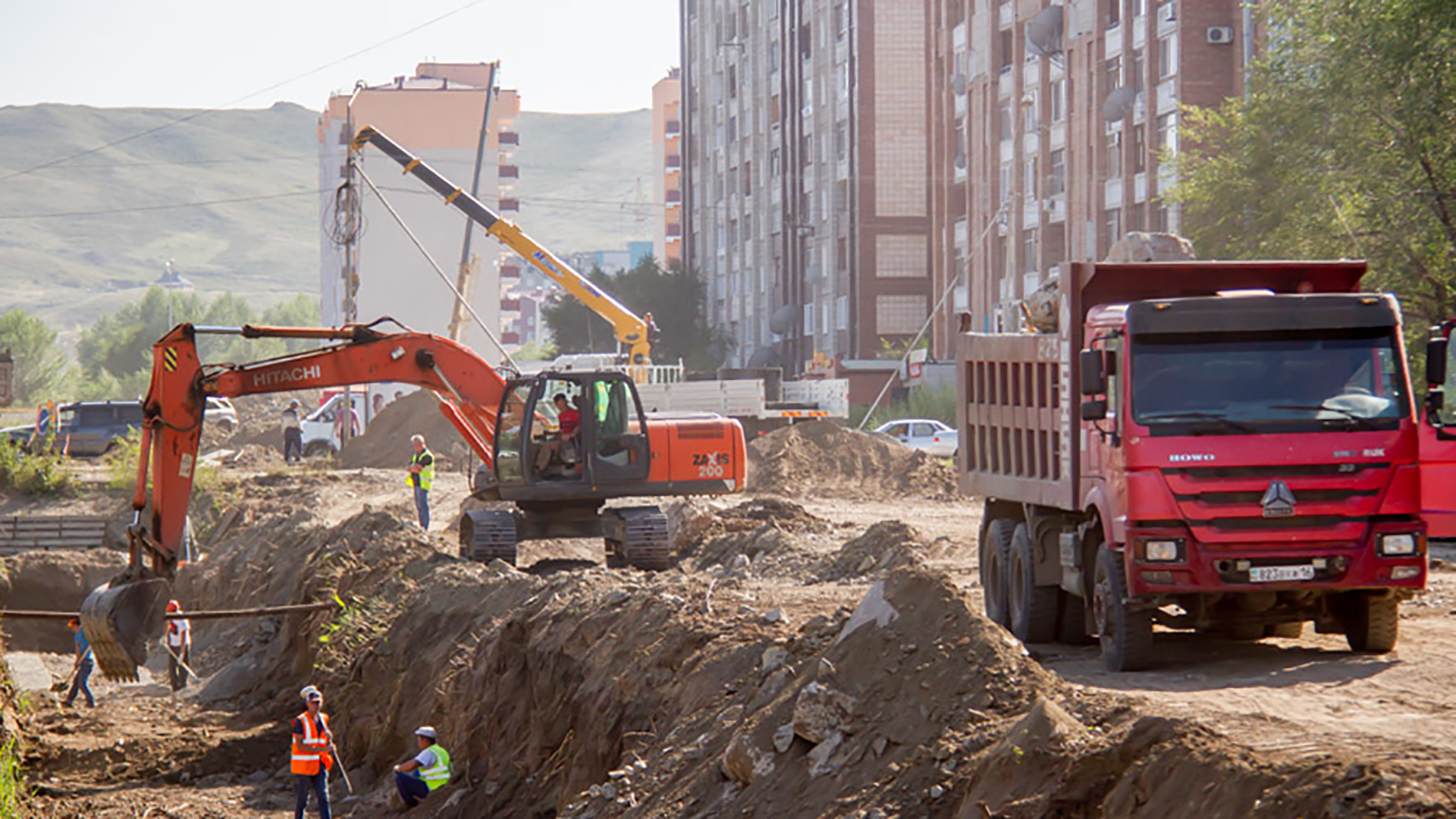
For 9 months of this year, according to preliminary data, 243.6 thousand m² of housing, or 102.4% of the corresponding period last year, were commissioned. In addition, in order to increase the volume of housing under construction in 2019, it is planned to additionally begin construction of 34 houses with a total area of 219.3 thousand m² or 2,383 apartments. In the city of Ust-Kamenogorsk - 104, 4 thousand m² (14 houses, 1 206 apartments), Semey — 107, 5 thousand m2 (19 houses, 1 313 apartments), pos. Kasima Kaysenova, Ulan District — 7, 4 thousand m² (1 house, 80 apartments).

Of these, construction and installation work has begun on 11 houses with an area of 66 thousand m² in Semey. Until the end of this year The construction of another 16 apartment buildings with a total area of 92.4 thousand m² in the cities will be started. Ust-Kamenogorsk and Semey.
In total, by the end of this year, it is planned to build 111 multi-apartment buildings with a total area of 687 thousand m2 (7,937 apartments), of which 228.9 thousand m² of housing or 46 houses will be commissioned before the end of the year. 65 multi-apartment buildings of 458.1 thousand m² are moving to 2020.

As part of the 7-20-25 Housing Mortgage Lending Program, as of Oct. 3, 2019, second-tier banks in the region accepted 937 applications for housing mortgage loans in the amount of 8,300.3 million tenge, of which 588 applications for amount of 5,263.9 million tenge. Today, in order to provide housing for large families of low-income families within the framework of the Baqytty Otbasy Program, there are 1,644 large families in the queue for housing from the state housing stock (345 in Ust-Kamenogorsk, 443 in Semey, in other cities and districts — 856).

As part of the Nurly Zher state housing program, large families are provided not only with rental housing, but can also participate in the Baqytty Otbasy program for the purchase of credit housing at a reduced rate at 2% per annum, with an initial contribution of 10%.
For lending this year, through the Housing Construction Bank of Kazakhstan JSC, a limit on the issuance of 300 loans with an amount of not more than 10 million tenge for acquired housing has been increased. Of the 1,644 waiting lists, 281 large families have deposits with the total amount of 62.5 million tenge, including: Ust-Kamenogorsk — 136 families for 23.9 million tenge, Semey — 104 families for 12.8 million tenge, other areas — 41 families for 25.8 million tenge. Currently, 203 large families with low-income families have been sent to the Bank under the Baqytty Otbasy program to assess solvency.
Over 3 years more than 1 thousand new modern equipment purchased
In order to improve the quality of medical care, public satisfaction with medical services and the achievement of target indicators of the Densaulyq State Healthcare Development Program 2016-2019, a comprehensive health system development plan is being implemented in the region. They remain priority areas: the development of the protection of motherhood and childhood, the fight against cancer and diseases of the circulatory system.


The implementation of the program to improve the effectiveness of healthcare in five areas is actively ongoing: modernizing clinics according to international standards and investing in advanced technologies for the diagnosis of treatment, training and retraining personnel in leading world clinics and scientific centers of the country, creating specialized high-tech centers with opening branches of leading republican scientific centers, digitalization and paperless hospitals, transition to international standards for the quality of medical services provided by Joint Commission International.
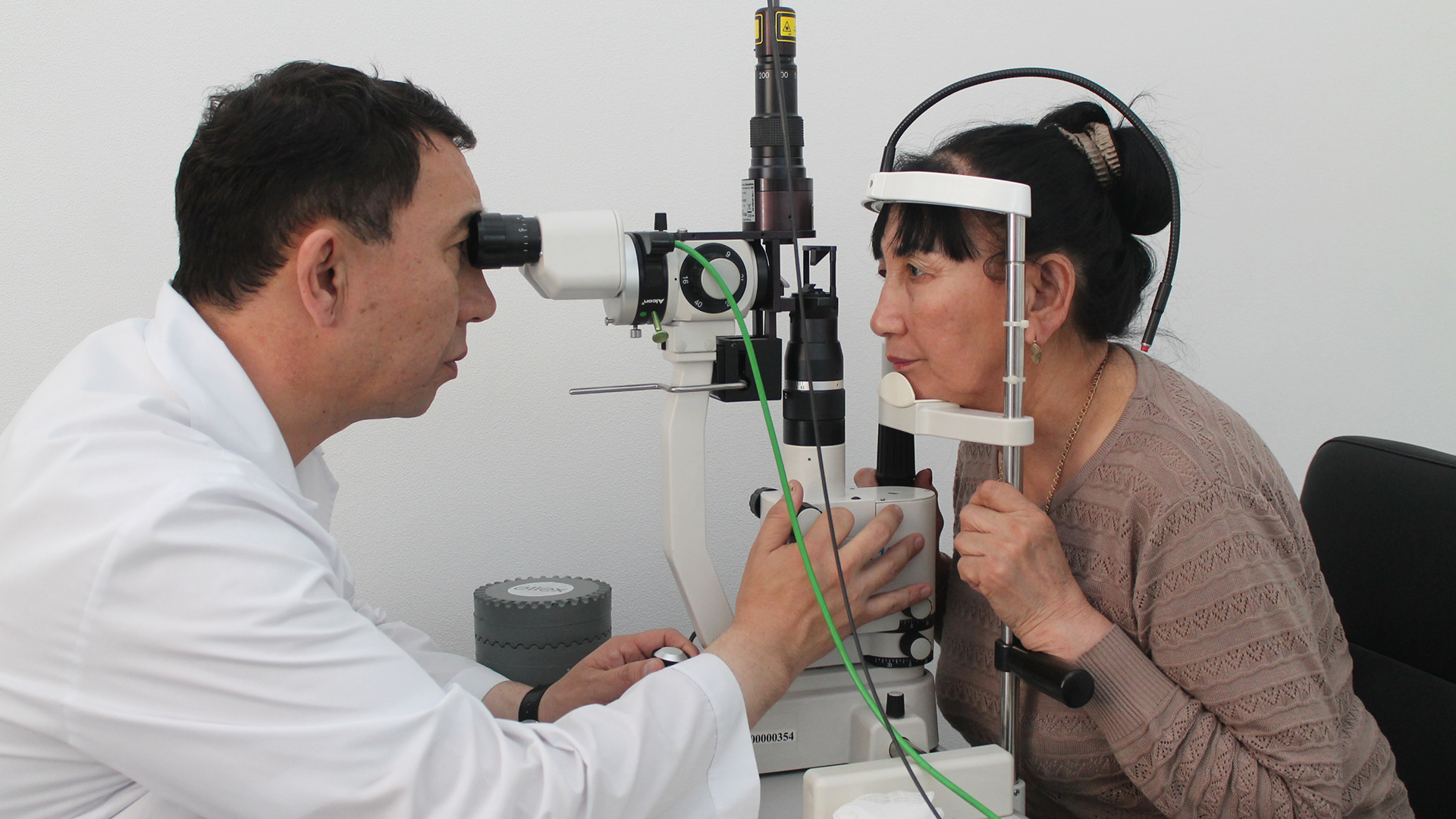
Over these three years, 26 billion tenge were allocated from these budgets to these areas.
According to the deputy akim of the East Kazakhstan region A. Nusupova, measures are being taken in the region to introduce modern technology for early detection of diseases and complex surgical procedures.
“Health care is a key priority in the development of the social sphere in the region. Over three years, we have invested more than 25 billion tenge in the implementation of a comprehensive development plan in such key priority areas as maternal and child health, circulatory system diseases, oncology and traumatology,” she said.
According to the deputy akim, during this period unique medical equipment was purchased in the largest centers, a stroke center was created from scratch in Ust-Kamenogorsk, a center for robotic surgery, in Ayagoz and Altai — second level stroke centers, maternity hospitals were transferred to the third level of equipment, which suggests that more than 320 thousand of the population of the region will be covered by quality medical services in such areas as gynecology, urology, and circulatory system diseases.
Another achievement of the region is the creation and commissioning of a hybrid neurosurgical operating room based on emergency medical care in Semey and the opening of a polytrauma and orthopedics center.
As part of the implementation of the regional program for 3 years, 1,080 units of equipment were purchased. This made it possible to increase the volume of high-tech medical equipment by 2.5 times and by 85% complete the tasks of international audit to ensure that the leading clinics in the region meet global average standards. By the end of the year, this figure will be brought to 100%.

In particular, this year an additional MRI 3.0 Tesla of the latest generation worth 1.4 billion tenge was additionally purchased at the regional Oncology and Surgery Center. This will improve the early diagnosis and quality of patient care.

Using PPP mechanisms, an Ophthalmic Surgery Center was opened, equipped with modern equipment and staffed with highly qualified personnel.
More than 120 thousand new diagnostic and treatment methods have been introduced.
As a result, for three years there has been a positive trend in the main indicators of the industry: infant mortality is reduced by 22%, mortality from malignant neoplasms by 4.5%.
Today, 3.7 billion tenge has been allocated for a three-level training program in priority areas - oncology, cardiology, obstetric care and childhood, management for chief physicians of district hospitals. In just three years, 3,700 primary care doctors have been trained at the 1st level at the Semey Medical University and Republican Scientific Research Institutes.

The steps taken made it possible to increase the level of satisfaction of the population with the quality of medical care by 134%, and the early detection of malignant neoplasms by 106%.
The Polytrauma and Orthopedics Center with the purchase of the whole complex of modern equipment was opened on the basis of the Semey emergency hospital.

The country's first neurosurgical hybrid operating room was also opened, which will carry out up to 3 thousand operations per year. The academician, the chief neurosurgeon of the country, Serik Akshulakov, successfully performed the first operation.
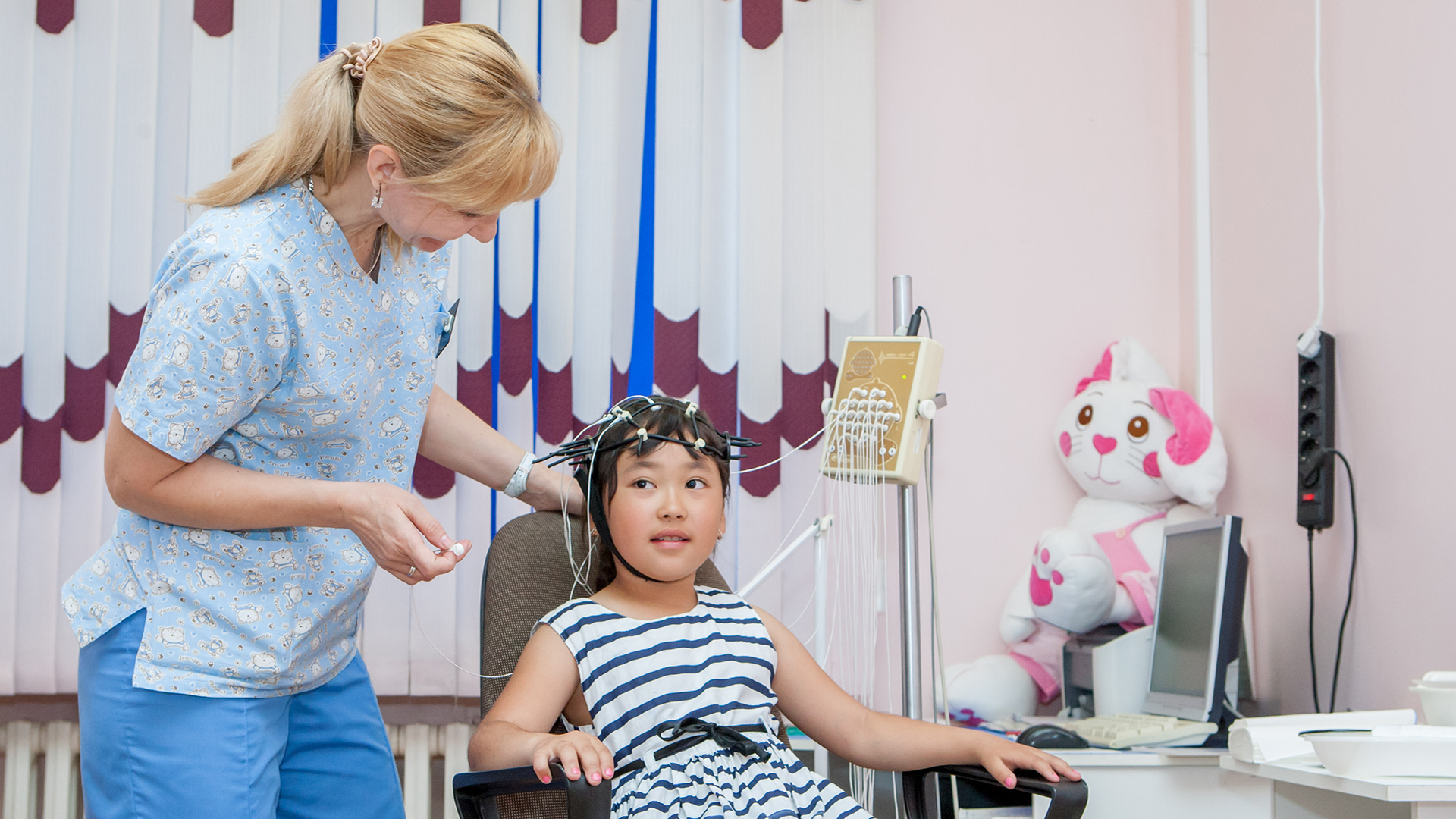
The next important area of improving the quality of medical services is the accreditation of institutions in accordance with the international Gold Standard — Joint Commission International. This work was started at the Emergency Hospital in Semey. The ongoing systematic work on the objectives of the Presidential Election Program in the direction “Formation of a healthy nation: the quality and accessibility of medical services” allows us to implement the key principle of development of healthcare in East Kazakhstan region — “from catching up to leading” in accordance with global trends.
No three-shift and emergency schools in the region
Currently, there are 648 schools in the region with a contingent of 190,526 students. Sep. 1, one school for 1,000 students was opened in 19 residential areas of Ust-Kamenogorsk.
By the end of the year 2 schools will be open. The contingent of the first classes amounted to 21,372 children. Enrollment in first grade is fully automated. There is no shortage of places in the first classes.
100% repair was completed in all planned 277 schools, including 10 major repairs were carried out, 267 schools — ongoing repairs.

There are 800 preschool institutions with a total of 61.3 thousand children in the region’s preschool education system, including 333 kindergartens (43.4 thousand children) and 467 mini-centers (17.9 thousand children). Coverage of children with pre-school education and education at the age of 3 to 6 years is 100%, from 1-6 years — 84%. In 50 kindergartens 45 nursery groups are open for children aged 1 to 3 years, covering 950 children. According to the PPP mechanism, 107 preschool institutions function. Since the beginning of this year, 7 private kindergartens for 911 places have been opened. By the end of the year, it is planned to open 3 kindergartens: 2 kindergartens for 500 children in the city of Ust-Kamenogorsk, 1 kindergarten for 120 in the Beskaragai district.
All 19 districts are connected to automation “Queuing of preschool children (up to 7 years) for referral to preschool organizations”. To date, 11 thousand 256 children are provided with places in kindergartens through this system.

There are no three-shift and emergency schools in the region. All schools in the region received certificates of readiness for the school year and for the heating season. In the 2019-2020 academic year, the provision with textbooks and teaching and methodological complexes in the region was 100%, the delivery of textbooks and teaching materials to schools in the region was completed.
To date, 3,698 school-age children live in 307 rural areas where there are no schools.
In order to cover the education of these children, transportation was organized for 2,948 (100%) students, 750 students live in boarding schools.
Providing daily transportation of children is 100%. 163 rural buses are used to transport rural students. All buses passed technical inspection.
For the safe, high-quality transportation of children over the past 3 years, 41 buses were purchased from the regional budget.
Hot meals were organized in 577 (88.7%) schools for 188 278 students or 97.3% of students (2018-2019 academic year - 97.2%).
29,000 children are provided with free hot meals, which is 100% of certain categories of students, including 9,867 students from large families of low income.
In the region this year, 990 recreation camps functioned. Rehabilitation, recreation and employment coverage amounted to 99.5% of schoolchildren. All children from large and low-income families (33,582) were covered by free health and recreation.
Additional education covers 154 thousand 500 children (83.6%). There are 116 organizations of additional education.
In addition, in 651 schools, 2 thousand 853 sports sections with a coverage of 64 thousand 385 students (34.8%) operate free of charge. All children from low-income and large families attend circles and sections for free.

As part of the support program for children from low-income and large families, since May of this year, 3,582 children were exempted from payment in kindergartens, including 693 children with special educational needs.
Today, 33,583 children from large and low-income families are provided with a free school uniform made by local producers. For these purposes, an additional 500 million tenge was allocated from the regional budget. All students are provided with a new school uniform.

To ensure the opportunity to receive free technical and vocational education in colleges from the regional budget, 6,200 places of state educational order were allocated in the amount of 4.5 billion tenge per year, of which 3 billion tenge for students from large and low-income families.
There are 82 colleges in the region, of which 48 are public and 34 are private. More than 35 thousand students in 115 specialties and 231 qualifications gain knowledge in them.
Of the 35 thousand students, 52% (18,799 people) study on a state order, which is increasing annually by 10% (in 2018 – 7,290 places, in 2019 – 7,930, of which 1,730 places at the expense of the Republican budget under the Program productive employment and mass entrepreneurship).
The number of college social partners is increasing annually, the number of which is 1640 today. The largest of them are: Kazzinc, SemAz, KazMinerals, Kemont, AsiaAvto, UMP and many others.
In 56 colleges, together with 562 enterprises, the dual education technology is being introduced in 53 specialties, covering more than 3 thousand students.
The employment of college graduates in the region is 77% (employment and employment - 93.2%).
As part of the third initiative of the Head of State in 2019, 2 dormitories were opened for college students with 700 places (Electrotechnical College -350 places, Higher Medical College named after D.Kalmataev - 350 places). Until 2022, it is planned to build 5 dormitories for college students with 1308 beds.
By 2023, it is planned to implement 7 major infrastructure projects on shores of Lake Alakol
The East Kazakhstan region has high potentials for the development of the tourism industry. The region is famous for its unique beauty of nature, there are all types of landscapes that make it possible to develop almost all types of tourism.
Every year there is growth dynamics for all industry indicators, as evidenced by official statistics. So, today in the region there are 547 places for tourists. The number of visitors served also grows annually, in 2018 compared to the corresponding period in 2017, it increased by 16.2% and amounted to 565,030 people.
In May of this year, the Government approved the State Program for the Development of Tourism until 2025. Within the framework of the State Program, it is planned to develop the main points of tourism growth in the region, first of all, this is Lake Alakol, which is recognized as one of the 10 priority tourist sites of the republican scale and is included in the TOP 10 Touristification Maps.

In order to develop tourism on the coast, a phased, comprehensive work was carried out, a master plan and a detailed development plan were developed. A working group has been created that constantly monitors recreation facilities for compliance with domestic and sanitary conditions, fire safety, fulfills the conditions of memorandums signed between the district akimat and the owners of recreation facilities and other outreach work.

In 2016-2019, about 6.2 billion tenge was allocated from the regional budget for improvement and improvement of the infrastructure of Lake Alakol.
To ensure transport accessibility of recreation on the lake, there is a subsidized air service on the route "Ust-Kamenogorsk - Semey - Urdzhar". From June to September, railway transport is subsidized from Semey and Ust-Kamenogorsk to the station of Zhalanashkol. There are 4 direct bus routes.
In the next 4 years, 7 large infrastructure projects for a total of about 27.6 billion tenge are planned to be implemented on the shores of Lake Alakol.
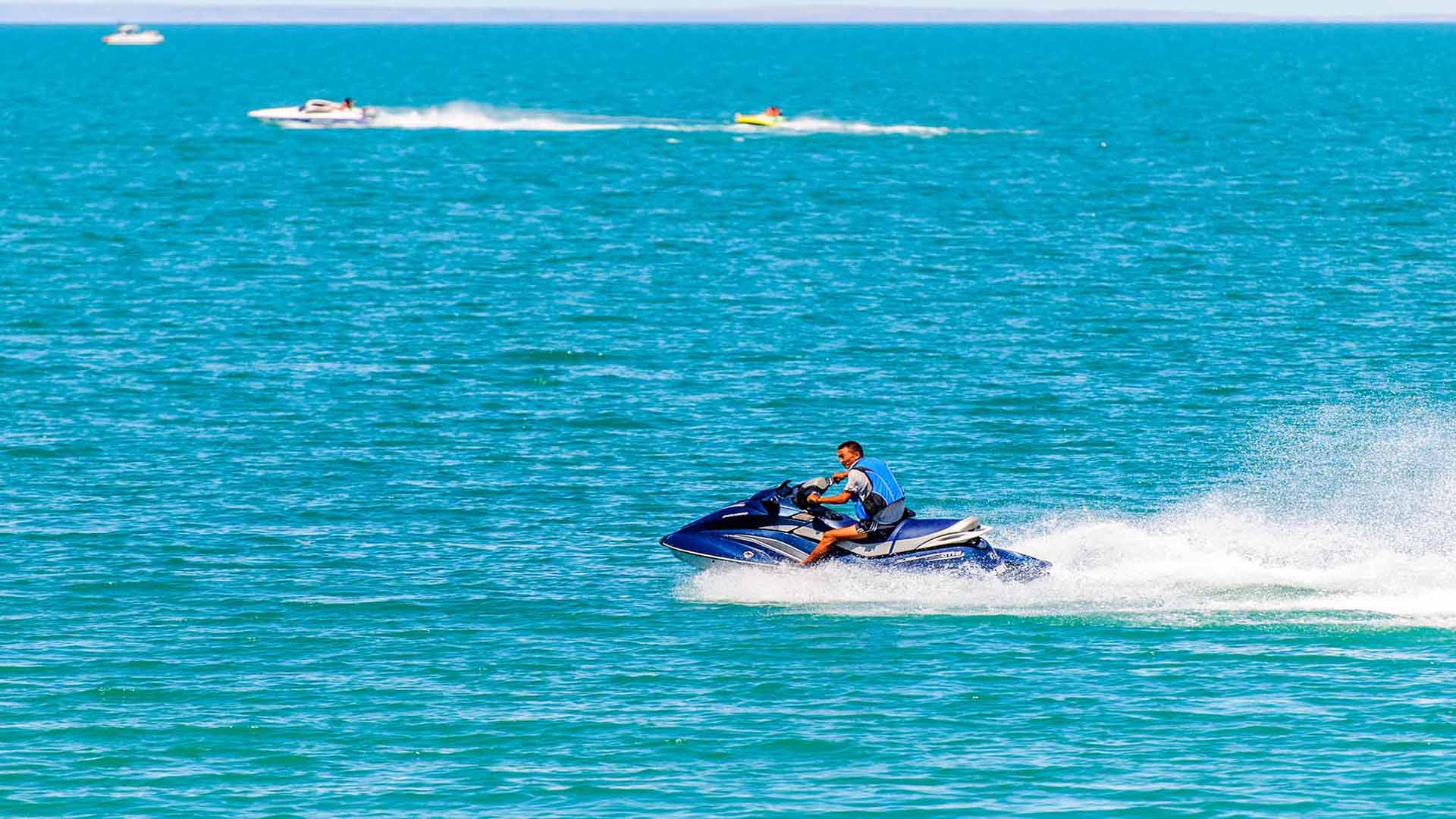
In addition, the Katon-Karagay GNPP, the Rakhmanovskoye lake, the Altai region mountain-skiing cluster and the city of Ridder were included in the touristization map of the TOP 50 regional priority sites. According to these objects, detailed program documents for tourism development will also be developed, within the framework of which it is planned to provide special investment sites for the construction of tourism objects, the development of engineering and transport infrastructure based on the experience of Lake Alakol.

Infrastructure is being developed at sacred sites. The territory around the mausoleum of the Kyrgyzbaat ata in the Tarbagatai district was landscaped, the Konyr-Aulie Cave was improved. An open-air museum has been created on the Berel barrows of the Katon-Karagai region.
In addition, a draft Action Plan for the development of eco-ethno-tourism in the East Kazakhstan region is currently being developed together with the akimats of cities and regions. In honor of the celebration of the 175th anniversary of the great thinker Abay Kunanbaev, the Tourism Department also provided a set of measures aimed at promoting tourism in the Abay district.
Stay updated about the events of the Prime Minister and the Government of Kazakhstan - subscribe to the official Telegram channel
Subscribe